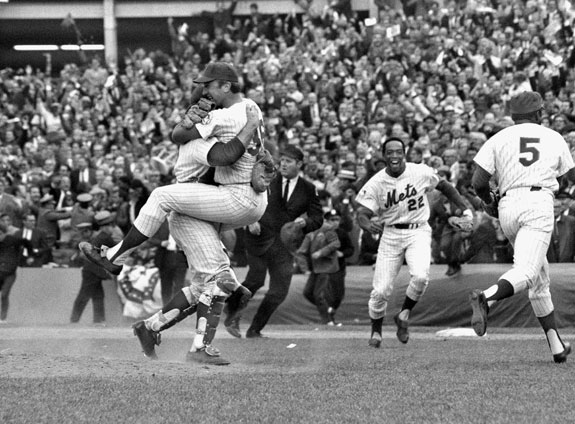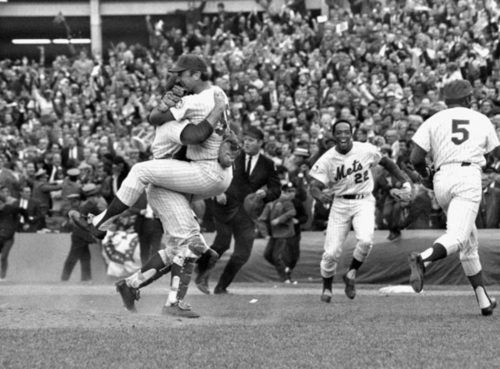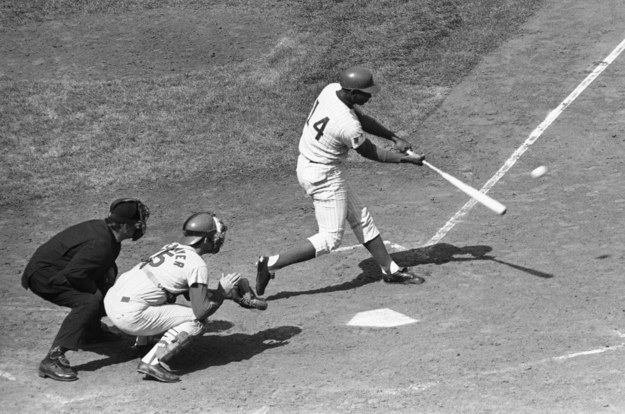
Ernie Banks, SI.com
Welcome to the final chapter in my exclusive four part series entitled, How The Miracle Mets Were Built. If you haven’t read the first three installments you can read them here:
Part 1 – The Spring of 1968
Part 2 – The 1968 Offseason
Part 3 – The Spring of 1969
At the June 15th trade deadline, the New York Mets were in second place, nine games behind the Chicago Cubs. Led by Leo Durocher, the Cubs were practically a collection of all-stars led by Ernie Banks, Billy Williams, Ron Santo, Randy Hundley, Glenn Beckert, Don Kessinger, and ace pitcher Ferguson Jenkins.
Behind Jenkins, the Cubs had a pair of solid starters in Ken Holtzman and Bill Hands. Rounding out the lineup and rotation respectively were ex-Mets Jim Hickman and Dick Selma.
Even the most optimistic Mets fans were probably hoping their team could make a nice run at the Cubs before settling into second place. Since the Mets were already exceeding reasonable pre-season expectations, trade talk had died down, although acquiring another bat could make the rest of the season a lot more interesting.
The trade the Mets were about to make seemed like a “nothing-to-lose” type of deal. The Mets sent Kevin Collins, still considered a pretty good prospect, a promising if somewhat wild AAA pitcher named Steve Renko, who was readily expendable with the Mets’ deep well of young pitching talent, and two non-prospect minor leaguers, Jay Carden and Dave Colon to the Expos for veteran first baseman Donn Clendenon.
Through 1968, Donn had spent his entire career as a solid right-handed hitting first baseman with the Pirates. With first base prospect Al Oliver ready to take over, the Pirates left the 33-year old Clendenon unprotected in the expansion draft, and he was selected by Montreal.
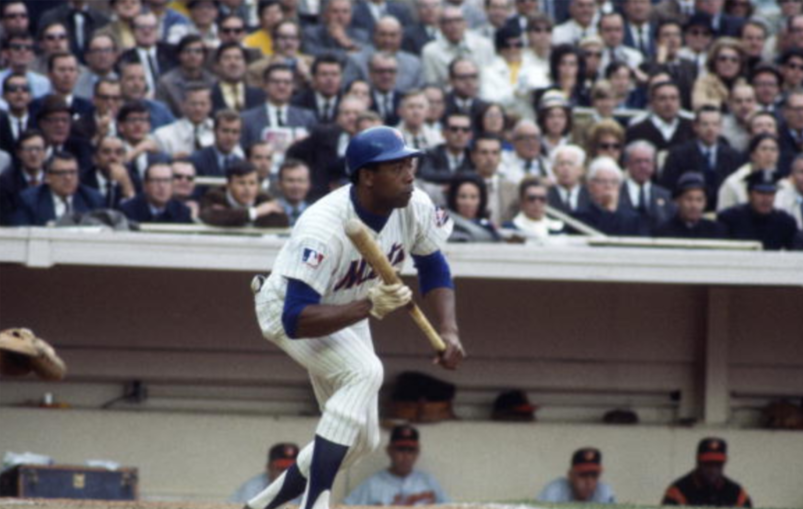
In January, the Expos sent Clendenon to Houston as part of a package for Rusty Staub, but Clendenon had issues with Houston’s manager, Harry Walker, who had previously managed the Pirates, and he refused to report. After the deal was re-tooled, Clendenon remained an Expo, but the team went with Bob Bailey and Ron Fairly at first base and Clendenon’s role was mostly as a pinch-hitter with just an occasional start. As of June 15th, he was batting .240 with 4 home runs and 14 RBIs. Still, he figured to get a lot of playing time with the Mets , mostly facing left-handed pitching..
Clendenon’s acquisition was one of many turning points in the season that of course, ended up spectacularly with the Mets rocketing past the Cubs and then cruising to a division title, sweeping the Braves in the LCS in a series dominated by Mets’ hitting and then stunning the powerful Baltimore Orioles by winning four straight after Tom Seaver lost Game 1. Clendenon was named the World Series MVP.
Throughout the season, there were so many highlights, so many heroes, and when the season was over, so many explanations on how it happened. Here are two of the most popular:
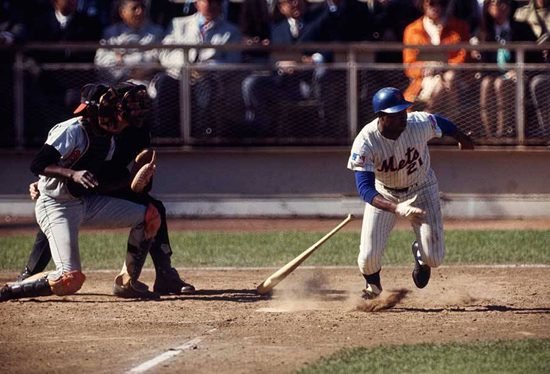
Explanation #1 – the Mets had superior pitching depth, got great years from Cleon Jones, Art Shamsky and Tommie Agee and their reserves stepped up when needed. Almost every player had a memorable game-winning hit, game-saving fielding play, unexpected contribution, or to put it in modern vernacular, “a highlight reel moment.”
To be sure, Jones and Agee were the steady foundation players at the plate with Harrelson and Grote in the field, but everyone (with the possible exception of highly-touted Amos Otis) seemed to contribute.
The team also had tremendous leadership from manager Gil Hodges, pitching coach Rube Walker, young and determined ace Tom Seaver, field general catcher Jerry Grote, and veteran clubhouse leaders Ed Charles and Donn Clendenon. This is a team that performed well beyond what the raw individual statistics would have indicated.
Explanation #2 – Cubs’ manager Leo Durocher overworked his starting pitchers and most of his lineup, playing the same men every day. With the Cubs playing a high percentage of day games in the hot sun, they were worn down by August.
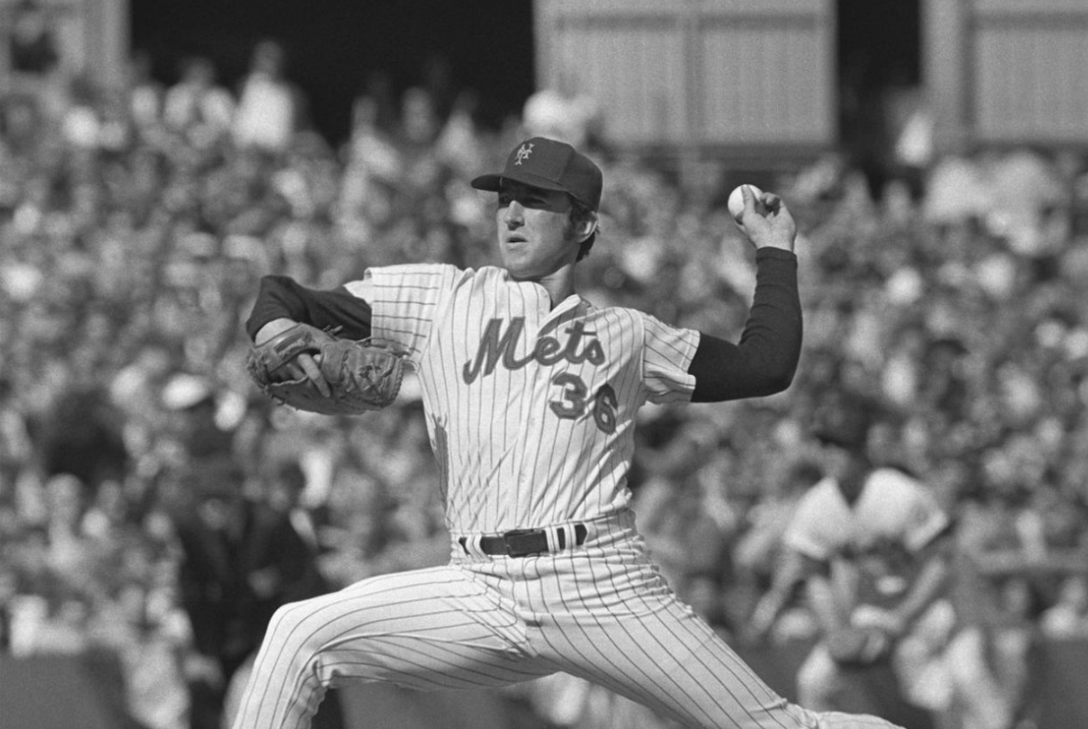
I could list many remarkable moments or even a game-by-game recap of great plays from that very memorable season, but so many books have already been written on the subject. (The best of those is noted below). Rather than look up all the dates and highlights, I’ll just list a few, in no particular order, from memory. It’s been fifty years, so please excuse me if my recollections are off a little…
- A ninth-inning game winning hit by Ed Kranepool off Ferguson Jenkins at Shea Stadium to give the Mets a pivotal win over the Cubs.
- Ron Swoboda hitting a pair of 2-run homers in a 4-3 victory over Steve Carlton, a game in which Carlton struck out 19 Mets.
- Al Weis, who rarely hit home runs, hitting his first of the year to beat the Cubs in a game at Wrigley Field.
- Jerry Koosman and Don Cardwell shutting out the Pirates In both games of a doubleheader in Pittsburgh with the Mets’ pitchers driving in the only run in each game.
- A spectacular throw by Rod Gaspar from left field on a hit by Willie McCovey in San Francisco to cut down a runner at the plate. Then, Grote thinking it was the third out, rolled the ball back to the mound where Clendenon raced to pick it up and threw to Bobby Pfeil to get McCovey at third for the final out of the inning.
The Mets were two-and-a-half games back of Chicago when the Cubs came to Shea Stadium for a two-game set on September 8.
The Mets swept to move within one-half game of first place and then won another six in a row to put some distance between themselves and the fading Cubs. The Mets finished with a 39-11 record over their last 50 games to win the division by eight games over Chicago.
The NL Championship Series against the Braves and the World Series victory against the Orioles have been chronicled so often that even young fans can replay most of the highlights in their minds, so I won’t go into that here. Let’s just say that 1969 was a spectacular year for the Mets – Seaver won 25 games and Cleon Jones battled Pete Rose for the batting title, but there was so much more.
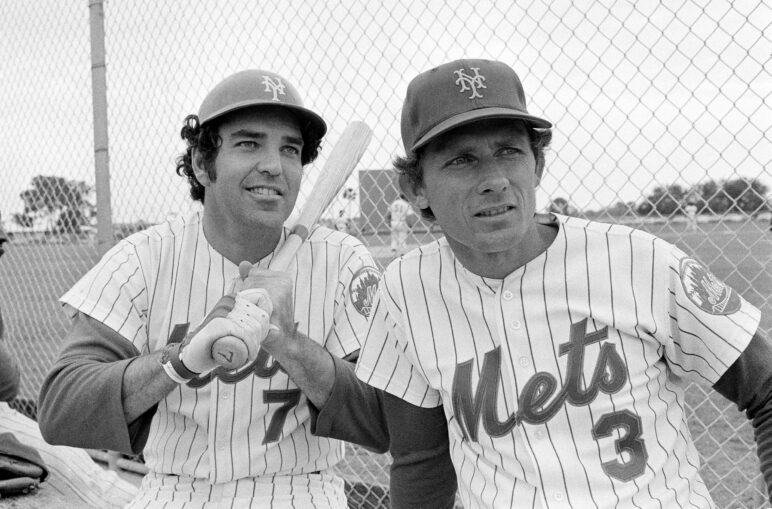
Players like Kranepool and Swoboda who we once envisioned as perennial all-stars but instead became part-time players had their moments of glory. Supposed fading veterans like Ed Charles, Don Cardwell, Ron Taylor, and Donn Clendenon always seemed to rise to the occasion as did career minor leaguers like Bobby Pfeil and Jack DiLauro and fringe major leaguers like Wayne Garrett and Rod Gaspar.
Swoboda’s catch in the World Series will long be remembered and his disappointing career forgotten. Al Weis, as weak a hitter as there was in baseball, stunned with his hitting against the Orioles. Every injury created an opportunity, every platoon move seemed to work. It couldn’t have been as perfect as it seems in retrospect, or the Mets wouldn’t have lost a game all year, but it was truly a season for the ages and for Mets fans, it was paradise.
Footnote 1: If you enjoyed reading my posts, I would highly recommend the book, “The Miracle Has Landed”, a publication from the Society for American Baseball Research edited by Matthew Silverman and Ken Samelsen. It is a treasure for devoted Mets fans. Rather than a chronological replay of the 1969 season, it gives an extremely in-depth baseball biography of EVERY member of the 1969 team in alphabetical order, focusing on their contributions to the ’69 team but also examining their careers in depth. You won’t find it in the bargain racks, but if you are going to own only one book about the 1969 Mets, this should be it.
Footnote 2: I cannot deny that part of my motivation for writing this series was to show how an organization built primarily on young pitching could overcome teams loaded with all-stars if the secondary players make contributions as well. As the Mets go into the 2013 season, most of their prospects are pitchers. The hope is that some will emerge as the next Seaver, Koosman, Gentry, Ryan, and McGraw while others can be used as trade chips to fill in the holes in the lineup. The team that wins is not always the team that looks the best on paper.
Footnote 3: After 1969, Mets’ fans were looking forward to many more championships, but except for a fluke in 1973 (the “Ya Gotta Believe” Mets), it wasn’t to be.
Trying to fill the hole at third base turned out to be the downfall of a potential dynasty as Amos Otis and Bob Johnson (yet another Mets’ pitching prospect) were traded for Joe Foy and later on Nolan Ryan, Lee Stanton and 2 other players were dealt for Jim Fregosi. All in an attempt to fill third base which neither trade ultimately accomplished.
The Mets’ system would also develop players like Jon Matlack and John Milner as well as Ken Singleton and Jim Bibby who were traded away.
Go back a few years and there’s always that “we should have drafted Reggie Jackson instead of Steve Chilcott” lament. Wow, what a team the Mets might have had in the 1970’s if they had made a couple more good trades, instead of those awful ones, or maybe hardly any trades at all.
At least nobody could ever take 1969 from us, that season will always be ours to cherish.
